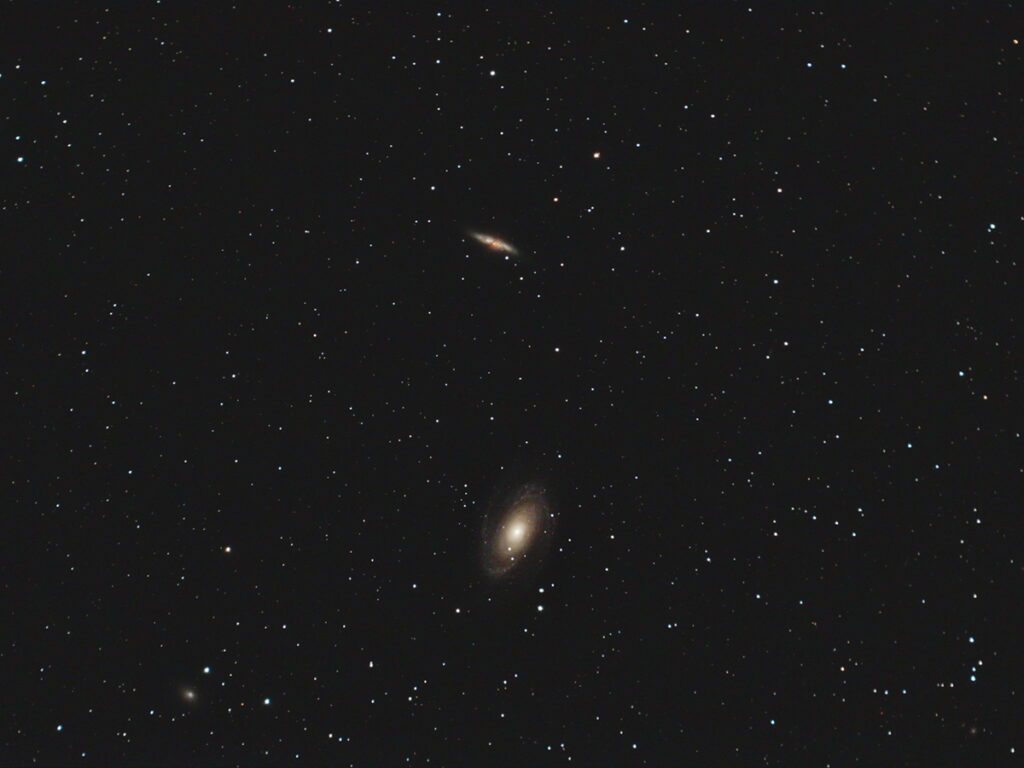
Telescope: Meade SN6 Comet Tracker at f/3.6, Orion Atlas EQ-G
Camera: Full Spectrum Modified Nikon D5300, Baader Mk III MPCC
Filter: Orion Imaging Skyglow Filter
Guide scope: Orion 50mm, ZWO ASI120MM mini
Exposure: 72x60sec, ISO 200, saved as RAW
Darks: Internal (Long Exposure Noise Reduction On)
Flats: 32×1/10sec, Tee shirt flats taken at dusk
Average Light Pollution: Red zone, Bortle 8, poor transparency, bright moonlight
Lensed Sky Quality Meter: 18.1 mag/arc-sec^2
Stacking: Mean with a 2-sigma clip.
White Balance: Nebulosity Automatic
Software: Backyard Nikon, Deep Sky Stacker, Nebulosity, Photoshop
This is M81 (bottom) and M82 (top), two bright spiral galaxies lying about 12 million light years away in Ursa Major. At present, these two galaxies are about 150,000 light years apart, though a few hundred million years ago the two passed very close to each other. The dark dust lane slashing across M82 is one result of this close encounter with M81 as are the blue star formation regions in M81. To the lower left is NGC 3077, another spiral galaxy.
This is one of a series of check-out images taken with my D5300a on the Comet Tracker. Given the very poor sky conditions I’m very happy with the results. This system offers the widest field of all of my scopes and does a great job providing context images.
M81 and M82 are circum polar objects and therefore never set from mid-northern latitudes. This time of year they are fairly well placed in the northeast during the late evening and are high overhead after midnight.
Recent Comments